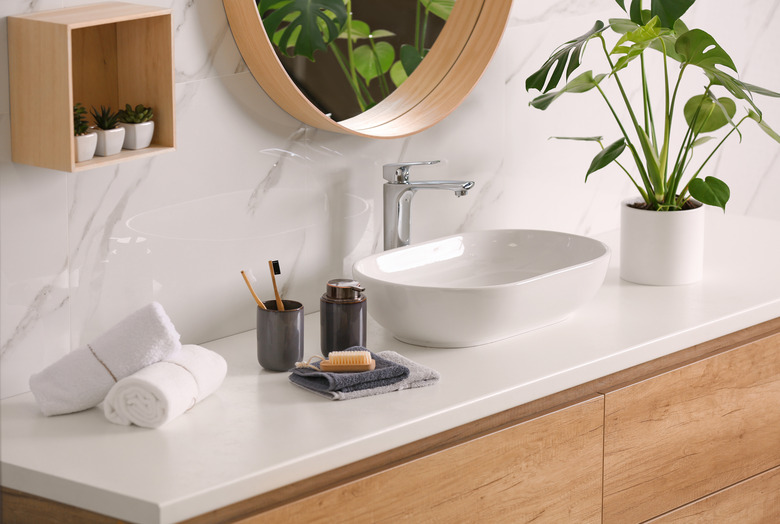How Does Drano Work To Unclog Drains?
We may receive a commission on purchases made from links.
When your sink is emptying slowly and you suspect a clog has formed, emptying a bottle of Drano liquid cleaner down the drain is a quick solution, but is it the right one? That depends on a few things, including the age of your pipes. Drano products use harsh chemicals to eat through and break down clogs so all that gunk can be washed away into your waste pipe. It's often effective but evaluate your options before using Drano on clogs.
Tip
Drano drain cleaners are made with a caustic ingredient called sodium hydroxide, which dissolves clogs until they break down enough to be washed along further into your waste pipe.
How Drano Drain Cleaner Works
How Drano Drain Cleaner Works
Drano is an entire family of products designed to clear clogged drains. Different types of Drano products have slightly different formulations, and they work in slightly different ways to break up clogs. The basic formula, Drano Liquid, contains a caustic agent called sodium hydroxide that dissolves organic matter, like hair and soap scum. The formula also contains water, bleach, a corrosion inhibitor to protect pipes, and a defoaming agent to keep foam from forming.
Sodium hydroxide is used as the caustic agent in other Drano formulas, with other ingredients added depending on the product's specific purpose. For example, Drano Max Gel includes a thickener that helps the product cling to clogs, giving the sodium hydroxide more time to break down whatever is blocking the drain.
Instead of a defoaming agent, Drano Duel-Force Foamer includes hydrogen peroxide. The product is composed of two liquids in separate chambers. When the bottle is emptied into a clogged drain and the liquids combine, the hydrogen peroxide creates a reaction that makes the cleaner foam. The foam fills the entire pipe, clearing debris from the walls more effectively than liquid cleaner.
Pros and Cons of Drano
Pros and Cons of Drano
You might reach for Drano and similar liquid drain cleaners because they work quickly and tend to be very effective at breaking down clogs. They're caustic enough to open drains clogged with hair. If you use Drano correctly and occasionally, it probably won't do any damage to your pipes (if they're newer than about 20 years old).
There are some downsides to using caustic liquid drain cleaners, like Drano products. They can cause some irritation to your skin or eyes and can be extremely dangerous to kids and pets if ingested. Drain cleaners should not be used in old metal or plastic pipes, which are more prone to damage than newer pipes. If you're not sure about the age or state of your home's plumbing system or have any hesitation about being exposed to harsh chemicals, avoid Drano and look for other clog-busting solutions.
Alternatives to Drano
Alternatives to Drano
When you need to unclog a drain, start with plunging before anything else. Use a sink and drain plunger with a flat bottom. Fill the sink or tub with a few inches of hot water (unless there's already standing water), place the plunger's cup over the drain, and plunge forcefully up and down several times. This may be enough to shift the clog and wash it down the pipe.
If you need to dissolve clogged food in a kitchen sink, the reaction created by combining baking soda and vinegar may be enough to break down the food. Pour 1 cup of baking soda into the drain followed by 1 cup of white vinegar. Cover the drain with a rubber stopper to keep the foaming mixture inside the pipe. Flush with hot water after 15 minutes.
Stubborn clogs may require more powerful chemicals. One option that's less corrosive than Drano is enzymatic drain cleaner, which uses bacteria to eat away at clogs. It's safer to use but works more slowly than Drano.
